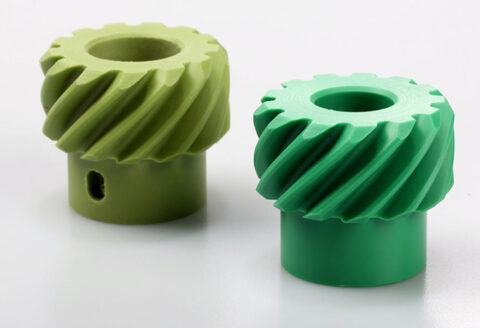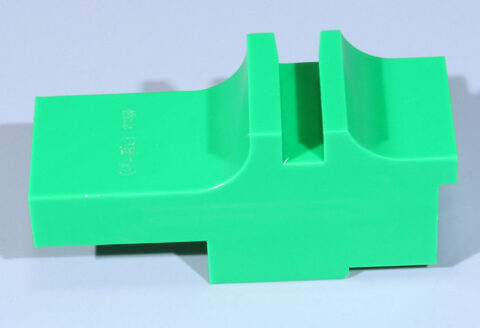As one of the four basic manufacturing processes, electroplating is widely used in various industries, such as high-end electronics, aviation, aerospace, energy, nuclear industry, low-end daily hardware, auto parts, stationery products, etc. Replaced service industries.
According to incomplete statistics, in 2009, the number of electroplating enterprises (enterprises above designated size) in my country totaled 15,000, with more than 5,000 production lines and a production capacity of 250 to 300 million square meters of electroplating area. In recent years, with the remediation of heavily polluting enterprises by local governments, the number of electroplating enterprises has been on a decreasing trend.
In 2008, the Ministry of Environmental Protection promulgated the “Emission Standards for Electroplating Pollutants” (GB21900-2008). The promulgation of the standards provides a basis for the management of key industries and key pollution sources.
What problems does the new emission standard encounter?
Need to find a balance between compliance with investment and operating costs
According to the physical and chemical characteristics, hazards and pollution control needs of electroplating water pollutants, the new standard selected 20 pollutants as water pollution control items, including 11 metal pollutants and 9 non-metal pollutants. Compared with the discharge concentration limits of surface treatment wastewater in some EU countries, the strictness of the metal pollutant discharge standards in the standards is at the middle and upper reaches. However, several indicators of non-metal pollutants such as chemical oxygen demand and phosphorus are included in the total discharge of surface water pollutants, so the control is also strict.
The investigation found that electroplating companies/parks in various regions have some problems in the implementation of standards:
First of all, COD, ammonia nitrogen, total nitrogen, total phosphorus and other biochemical indicators are due to poor biochemical properties of wastewater, which cannot be treated by conventional AO or A2O processes, which are the main factors that exceed the standards. The main sources of COD in electroplating wastewater are: esters in pre-treatment wastewater (deoiling, wax removal); various additives in the plating solution (surfactants, brighteners, complexing agents, etc.); excessive addition of reducing agents The resulting “false COD”. Although the COD concentration of electroplating wastewater is not high (200~300mg/L), it cannot be effectively treated by conventional biological methods due to its poor biochemical properties.
Secondly, Cu ions are the main excess factor of heavy metal ions in the chemical treatment process. The complexing agent (EDTA, sodium tartrate, etc.) produced in the electroplating process chelates with copper to form complex copper, and other processes will also produce corresponding copper-containing complexes, which cause the complex to be easily broken or not precipitated in the chemical precipitation method. Completely cause the copper to exceed the standard.
Thirdly, the investment and operating cost pressure to reach the special discharge limit of water pollutants in the standard is high. In order to meet the standards in parks or enterprises, most of the heavy metal wastewater and reusable wastewater use membrane technology. The investigation found that the input cost of membrane treatment in large-scale centralized sewage treatment plants for electroplating wastewater accounted for about 20% to 30% of the total cost, and the operating cost increased by about 25% to 40%. The input and operating costs of membrane treatment in small and medium electroplating wastewater treatment plants were even higher. High, which is a little bit stressful for electroplating wastewater treatment plants that have been renovated or newly built.
The park becomes the main form of development
Develop from extensive distribution to centralized development, but the situation of enterprises entering the park is not ideal
The investigation found that four years after the standard was promulgated, the pattern of the electroplating industry and the corresponding governance industry has changed.
First of all, the industry has developed from extensive distribution to centralized distribution. The centralized development of electroplating parks has become the main development model of the electroplating industry at present and in the future. The construction of the electroplating park can realize unified production, unified management and unified pollution control, which is conducive to realizing the supervision of the electroplating industry in a region. But at the same time, the development of electroplating companies in the park also means that the scale, automation, management level and requirements of electroplating companies have increased, as well as nearly half of the relocation losses and customer loss, which poses a greater challenge to government departments. The investigation found that there are currently more than 100 electroplating parks or agglomeration areas that have been built or are under construction throughout the country.
The investigation found that although Guangdong, Chongqing and other provinces and cities are actively promoting the development of electroplating companies in the park, and adopting certain compulsory measures, the situation of entering the park is still not ideal. For example, the admission rate in Zhongshan, Huizhou, Guangdong and other places is about 50%, while electroplating companies outside the park in Chongqing still account for more than 50%.
After 2010, Zhejiang Province has formulated more and more stringent comprehensive rectification standards and acceptance standards for electroplating enterprises, and issued a series of policies. For example, the No. 67 document issued by the Environmental Protection Department of Zhejiang Province stated that “before the end of 2012, counties (cities, districts) with many electroplating enterprises will build electroplating parks. Except for a few benchmark enterprises, in principle all electroplating enterprises have completed their relocation or relocation. Lease workshops and equipment in the park for integrated development.” At the same time, 56 acceptance standards for comprehensive treatment of electroplating enterprise pollution were formulated, involving 9 waste water treatment, 6 waste gas treatment, and 3 solid waste treatment acceptance standards. The 56 strict acceptance standards have left a deep impression on electroplating companies in Zhejiang Province. The survey found that almost all local electroplating companies mentioned this standard.
Zhejiang Province has achieved remarkable results in the comprehensive renovation of electroplating enterprises in two years. For example, among 210 electroplating enterprises (including supporting electroplating workshops) in Ningbo, there are 196 electroplating parks (clusters) and industrial functional zones, accounting for Reached 93.3%. It is suggested that other regions can learn from the experience of Zhejiang Province and combine local characteristics, adopt both guiding and compulsory means, actively guide enterprises above designated size to enter the park, and ban small, illegal, and scattered enterprises.
Third-party operators find business opportunities
Professional governance companies have developed rapidly, providing environmental services for the treatment of electroplating wastewater in the park
After the promulgation of the new standards, technical and competent governance companies see this as an opportunity to quickly open up the market, become bigger and stronger, and gradually monopolize the market, while companies with weak technical strength can only share a little bit of the pie.
It is worth noting that with the centralized development of electroplating parks and strict emission standards, the demand for professional operators in centralized sewage treatment facilities in the parks is increasing, and third-party professional operating companies for pollution control in the electroplating industry are therefore Be developed.
At present, the centralized sewage treatment plant operation mode of each electroplating park is mainly self-operation (government self-operation or investor self-operation) and third-party operation mode.
For example, Zhejiang Province is mainly operated by a third party, among which the 4 electroplating parks in Wenzhou are all operated by third parties, while Ningbo, Quzhou and other cities are also mainly operated by third parties. Statistics found that more than 75% of the more than 20 electroplating parks in Zhejiang Province are operated by third parties, the proportion of third-party operations in Guangdong Province is about 50%, and the proportion of third-party operations in Chongqing City is less than 50%.
As a representative of a third-party operating company, Zhejiang Haituo Environmental Technology Co., Ltd. has doubled its operating scale every year in recent years. The company was established in 2007. In 2008, the company’s turnover was about 4 million yuan, and in 2012, the company’s turnover reached 160 million yuan.
It is understood that Haituo Environment currently conducts third-party operations on 12 electroplating parks and enterprises in Zhejiang Province, with a total operating scale of 40,000 tons/day (design scale). With the strict requirements for the implementation of standards and the strengthening of rectification in various regions, the number and scale of third-party operating companies will also show a trend of rapid development.
Online monitoring has become a new hot spot
Mandatory installation by heavy metal pollution companies, domestic and foreign manufacturers have seized the market one after another
According to the “Emission Standards for Electroplating Pollutants”, newly-built facilities should install automatic pollutant discharge monitoring equipment in accordance with the “Management Measures for the Automatic Monitoring of Pollution Sources” and be connected to the monitoring center of the environmental protection department. This has played a positive role in promoting the development of online monitoring. At the same time, as the country attaches importance to heavy metal pollution control, some provinces and cities have gradually begun to pay attention to online monitoring of heavy metal emissions, and heavy metal monitoring has become a new hot spot in the water quality online monitoring market.
At present, the heavy metal monitors on the domestic market mainly include copper, nickel, zinc, lead, chromium, arsenic, manganese and so on. The investigation found that in 2008, the domestic demand for heavy metal online monitors was low, and there were few manufacturers. One year after the “Emission Standards for Pollutants in the Electroplating Industry” was promulgated, the market began to warm up, and it didn’t really start to detonate the market until 2010. Local governments have successively issued policies that mandate heavy metal pollution enterprises to install online monitors.
In the context of the surge in demand in various places, the established online instrument manufacturers have used their existing technology accumulation and market channels to squeeze their horses and occupy more than half of the country; some manufacturers who are not engaged in environmental protection equipment have also seen business opportunities from this and joined the ranks of competition. . At the same time, foreign manufacturers (Applitek in Belgium, MTI in Australia, Istran in the Czech Republic, SYSTEA in Italy, etc.) have also imported products to China through distributors.
Experts predict that in the next 2 to 3 years, the scale of heavy metal online monitors will be about 5,000 sets. Considering 40% of the online monitoring of heavy metals in the electroplating industry, the market size of online monitoring of heavy metals in the electroplating industry will be about 500 to 1500 sets in the next 2 to 3 years, and the market amount will be about 300 to 900 million yuan.


